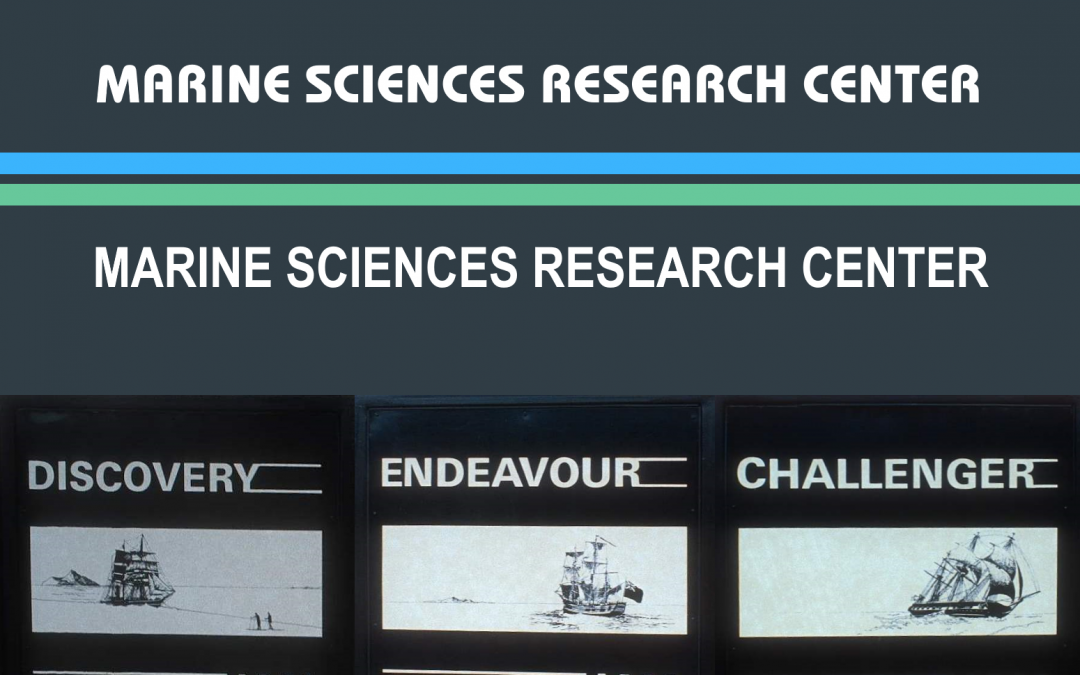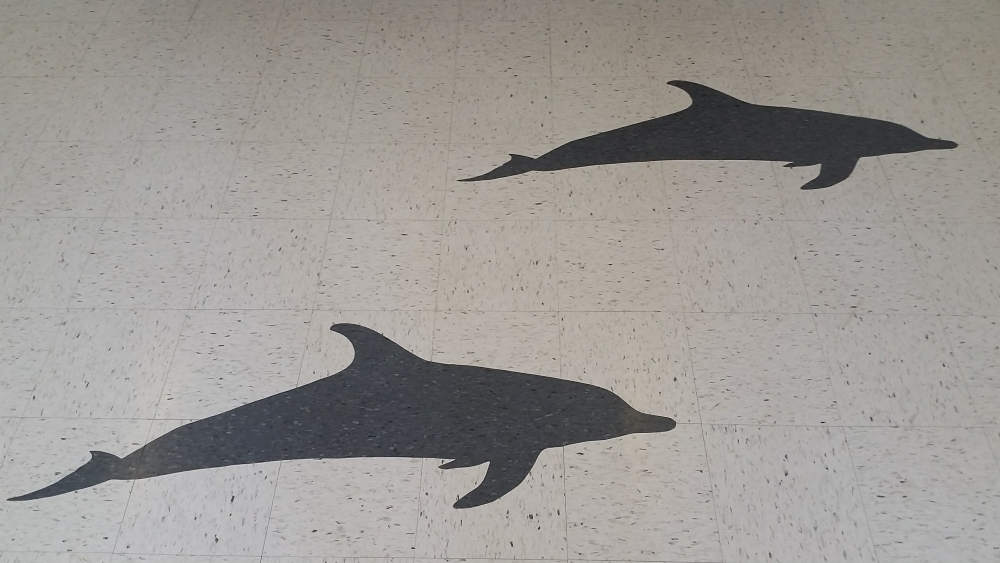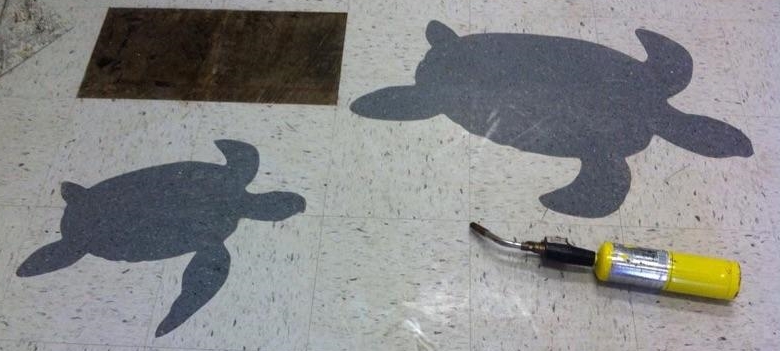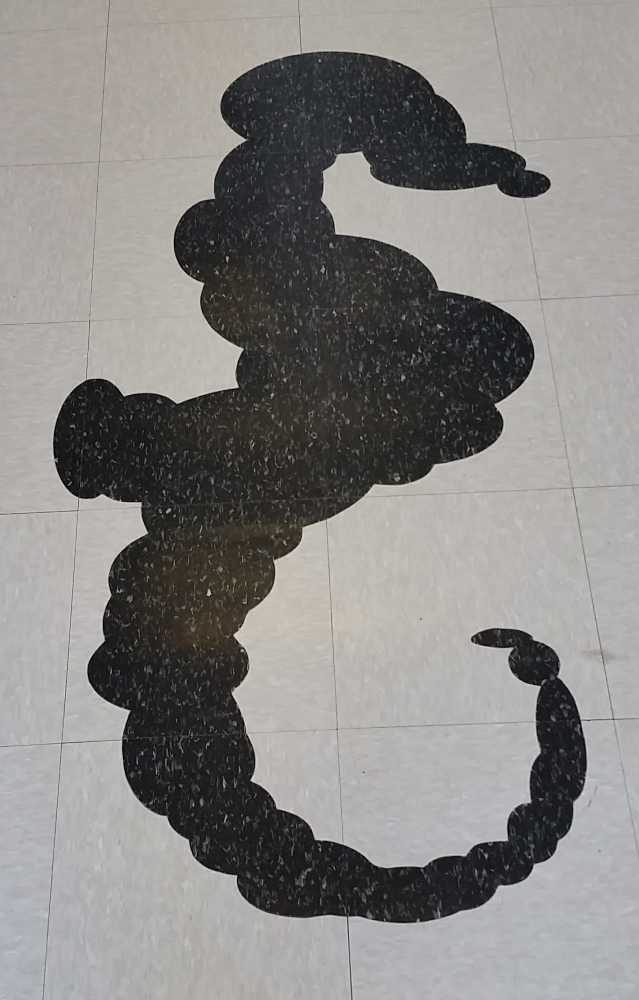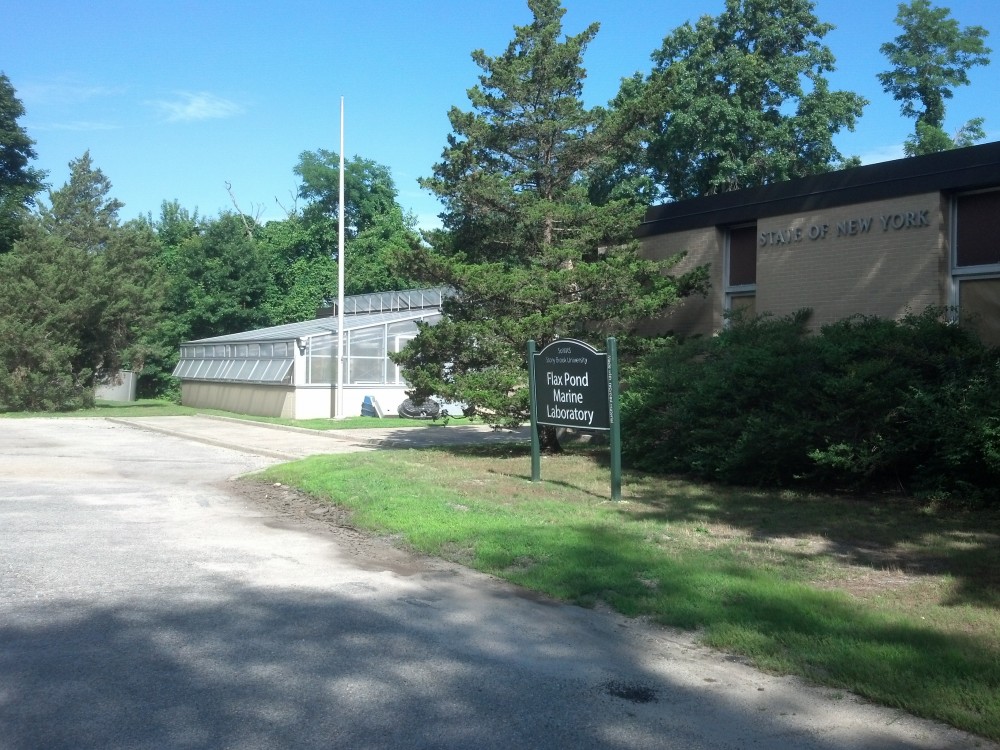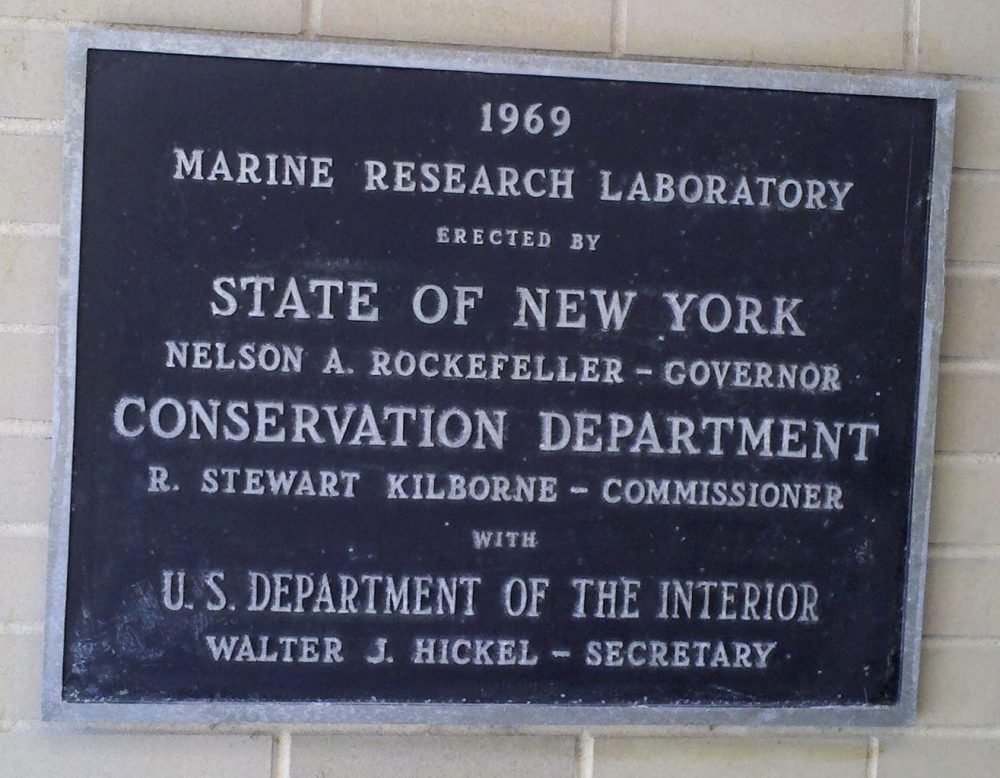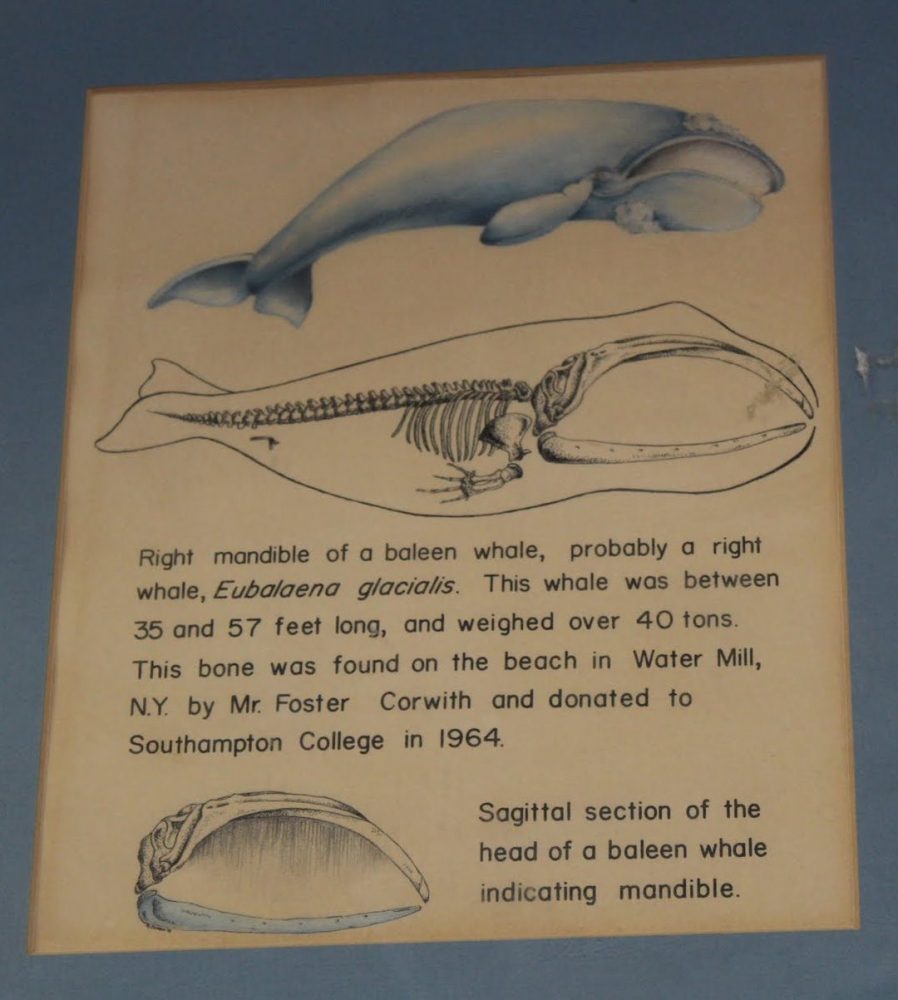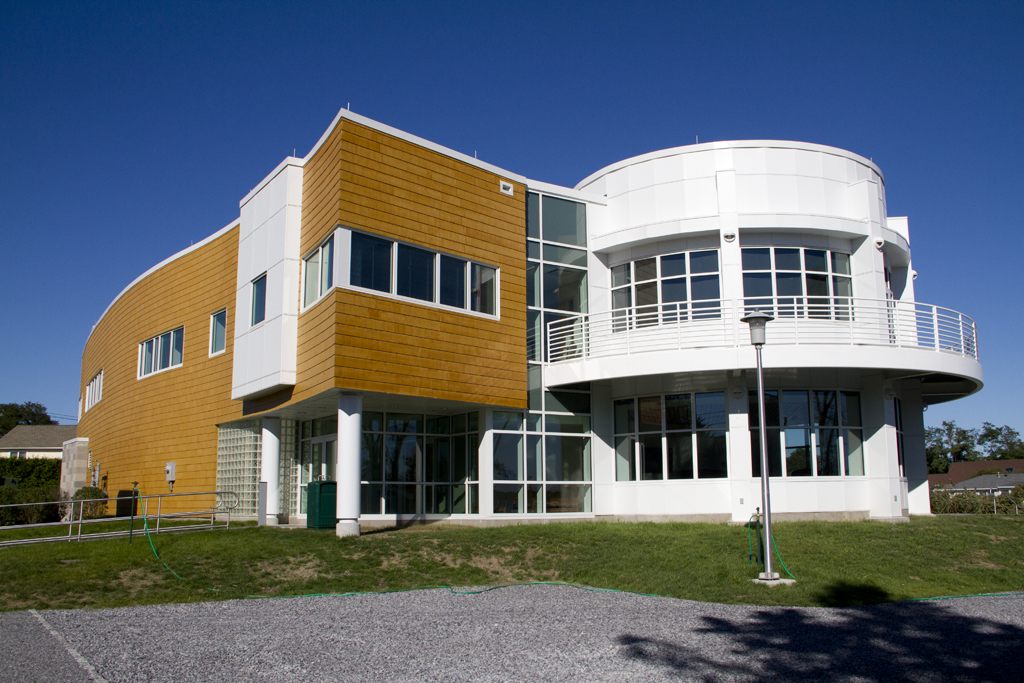South Campus
Contrary to popular belief, the SoMAS buildings on South Campus are not named after shuttles in the space program. In fact, our buildings and the space shuttles share their names from the same source: famous ships. A recently discovered memo from February 23, 1982 revealed a few more details about the building name choices.
The buildings of South Campus are designated with the name SURGE and a letter for each building. What is now Endeavour was G Building, Discovery was H Building, Challenger was F Building and Dana was D Building. In the early 1980s, Dean Jerry Schubel authorized a naming contest for each building at MSRC. A nautical theme was chosen for the contest. A representative from each building was responsible for finding suggestions, which were then voted on by the occupants. Coastal Marine Scholar Bill Dennison was responsible for SURGE H, Dr. Edward Carpenter was responsible for SURGE F, Dr. Malcolm Bowman was responsible for SURGE J and Dr. Glenn Lopez for SURGE D.
Dr. Bill Dennison, currently at the University of Maryland, chose the name of Discovery for H Building. According to him, “Discovery had an amazing history, including taking Robert Falcon Scott and Ernest Shackleton to Antarctica, which intrigued me” because “I liked and still like nautical and science history.” Discovery I and II during 1925 to 1934 made extensive surveys, mainly in the Southern Ocean while taking soundings with marine biological work and making physical and chemical observations. Along with other ships of their type they opened the field of descriptive oceanography. Through the extensive work of the Discovery Expeditions around Antarctica, the Scotia Sea – Drake Passage area came to be one of the best chemically and biologically known oceanic areas in the world.
Dr. Malcolm Bowman chose the name Endeavour for G Building based on the importance of the boat in New Zealand, Dr. Bowman’s birthplace. The HMS Endeavour was commanded by British Lt. James Cook on his first voyage from Britain to Australia and New Zealand. To prove the point of the iconic nature of the boat, Dr. Bowman is reported to have pulled out a New Zealand coin with the boat’s impression on the back. The vessel was to chart vast, relatively unknown, areas especially in the South Pacific. Cook set sail in 1768 from England accompanied by several scientists. On their voyage they discovered the Society Islands and charted the islands of New Zealand and explored the east coast of Australia. Cook was the first
explorer who, with the proper instruments, was able to determine latitude and longitude accurately.
Dr. Edward Carpenter, now at San Francisco State University was a physical oceanographer in F Building and chose the name Challenger. The HMS Challenger and the 1872 expedition named after the boat laid the foundation for oceanography and the name was the only logical choice. The most extensive oceanographical expedition ever undertaken was the cruise of the Challenger from 1872 to 1876. This expedition under the direction of Sir C.W. Thomson, circumnavigated the world. The Challenger, a 226-foot, 2,300-ton steam corvette, outfitted with zoological and chemical laboratories, made observations of many aspects of oceanography. Data were collected on weather, currents, water temperature, water composition, marine organisms, and bottom sediments. More than 4,700 new species of marine life were discovered. A deep-sea sounding of 4,475 fathoms (26,850 ft), the deepest that had been made at that time, was made in the Marianas Trench. This area is now called the Challenger Deep.
The naming of D Building has an interesting “evolution.” D Building was home to several faculty with strong evolutionary interests. Originally, the residents of D Building wanted to name the building after Charles Darwin, the renowned scientist. Unfortunately, that name did not fit the theme set by Jerry Schubel, but the name of the ship that Darwin sailed on for his famous trip was suggested. That vessel, the HMS Beagle, was deemed an inappropriate name given D Building’s history of maintaining lab animals for biomedical research, including dogs. Dr. Glenn Lopez chose the name Dana for D Building after the Danish ship Dana II, the “ship used by Johannes Schmidt during a voyage funded by the Carlsberg Foundation that ended up discovering that both American and European eels spawned in the Sargasso Sea.” Two important oceanographic cruises after World War I were the DANA I (1920-22) and the DANA II (1928-30). These expeditions originated in Denmark and explored the Atlantic and the Indian Pacific in their travels around the world. Their fields of interest lay mainly in Biology and Physics and during one of the voyages the breeding place of the European eels in the Sargasso sea was discovered.
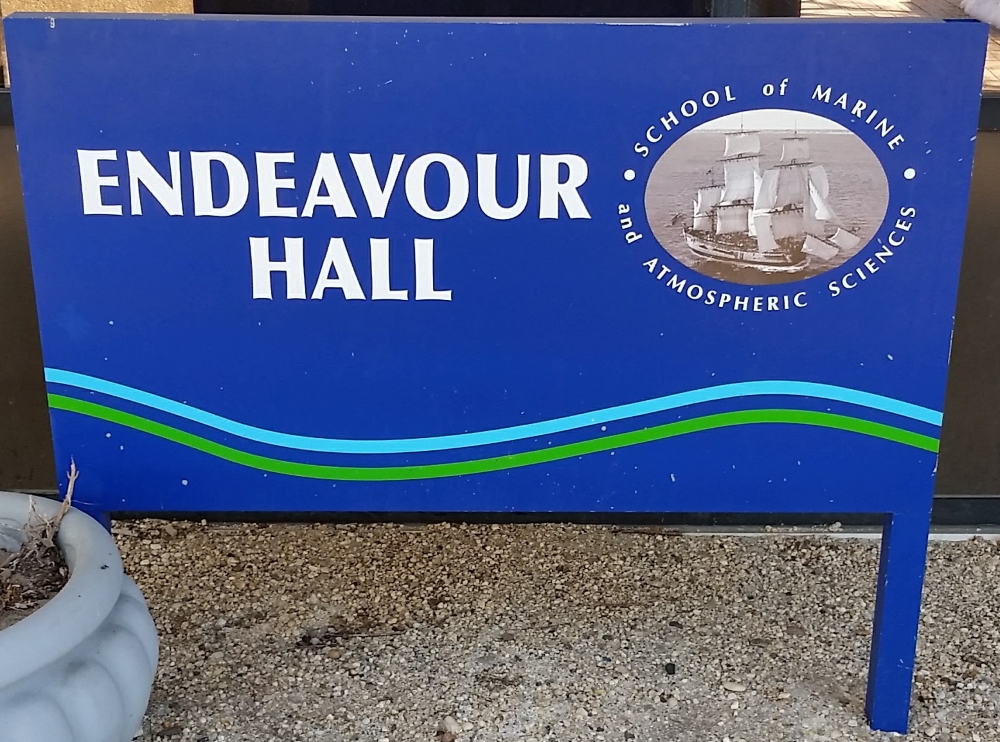
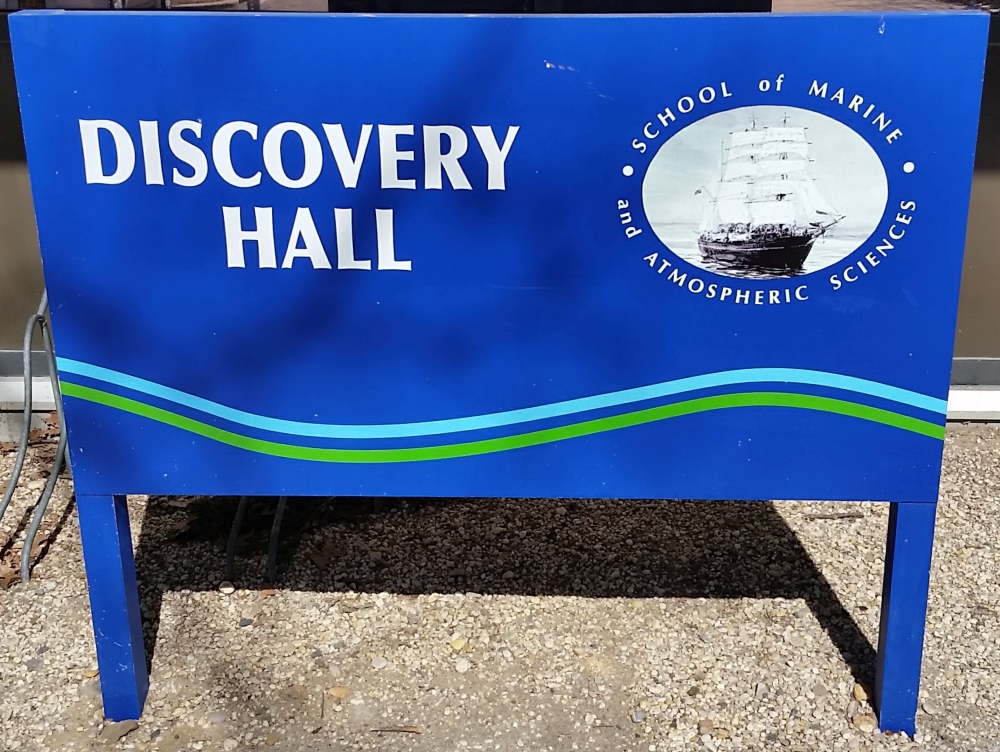


In Endeavour Hall, a shark was installed near the main entrance by the aquarium. In Discovery Hall, a sea horse was installed near the entrance by the Boat House. In Challenger Hall, a pair of dolphins were installed as you walk through the doors closest to MASIC. Dana Hall was the first building were the floors were repaired and unfortunately the tile replacement work was completed before any tile artwork could be installed. When SoMAS had a presence in Dutchess Hall, a turtle was installed. When SoMAS moved out of Dutchess Hall and the Stony Brook University Police Department moved in, the turtle was replaced with a police badge.
Many thanks to the efforts of John Marcinka from New Construction and Kevin Tumulty in Environmental Health and Safety for their help getting the tile artwork installed.
Flax Pond Marine Laboratory
The Flax Pond Marine Laboratory is named after the tidal estuary on which is resides, Flax Pond. According to the Friends of Flax Pond, the pond was originally named Fresh Pond. The name changed in the 18th century when the pond was known for its use to separate the fibers of the flax plant in a process known as retting. In the 19th century, an inlet was created to open the area of shellfishing.
Natural Sciences Center
The Natural Sciences Center at the Southampton Campus is home to the SoMAS faculty based in Southampton. The building was built by the SUNY Dormitory Authority for the LIU Southampton Campus and dedicated in September, 1965.
Take a virtual tour of the Natural Sciences Center.
Marine Sciences Center
Opened in 2013, the Marine Sciences Center on Old Fort Pond Bay at the Southampton campus is a brand new building that houses classrooms and research laboratories. The building is LEED certified. It was built on the site of the former marine station.



